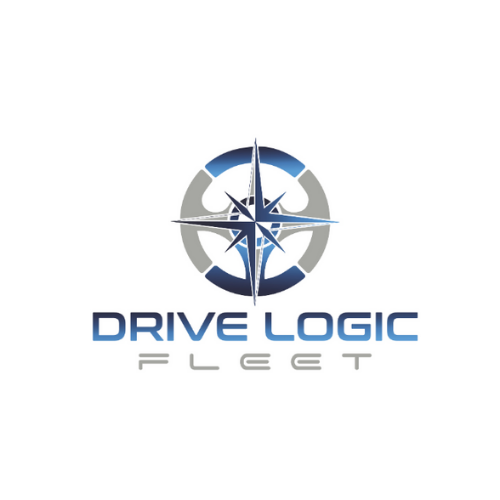Blog

Fleet Expansion Timing: When to Add Vehicles Without Overextending Growing a transportation business is exciting—but adding vehicles too quickly or without a clear strategy can lead to cash flow issues, underutilized assets, and insurance headaches. Timing your fleet expansion is just as important as funding it. Whether you're running NEMT, private tours, shuttles, or a small taxi operation, knowing when to expand—and when to wait—can be the difference between scaling sustainably and stalling your business. Here’s how to evaluate the right time to add vehicles to your fleet without overextending your resources. 1. Measure Vehicle Utilization Before Expanding If your current vehicles are idle during key hours or your drivers are waiting for jobs, it’s too early to grow. But if you're regularly turning down rides or pushing your current fleet to its limits, expansion may be justified. What to measure: Average number of trips per vehicle per day Hours vehicles are active vs. idle Booking rejection rates due to capacity Driver overtime or burnout levels Tip: Use dispatch and trip logs to analyze trends—not just gut feeling. 2. Look at Booking Trends Over 90–120 Days One busy week doesn't mean it's time to invest in more vehicles. Review your business trends across multiple months to identify consistent demand . Check for: Seasonal peaks vs. year-round growth New contract wins or account-based increases Repetitive scheduling conflicts or missed revenue Growth should be based on reliable income—not just temporary spikes. 3. Secure the Right Drivers Before Adding Vehicles A new vehicle won’t generate revenue if it doesn’t have a qualified driver. Before purchasing or leasing, make sure your hiring pipeline is healthy . Ask yourself: Do you have qualified drivers ready or in training? Can you meet licensing, insurance, and onboarding requirements fast enough? Will adding a new driver compromise service quality or training standards? Driver availability should match vehicle growth to prevent unnecessary downtime. 4. Confirm Financing or Cash Flow Can Support New Costs A new vehicle brings more than a payment—it brings insurance, registration, fuel, maintenance, and operational costs. Do the math first. Cost factors to include: Monthly loan or lease payments Commercial insurance premiums Routine maintenance and mileage-based service Expected downtime for onboarding and branding Tip: Have 3–6 months of projected vehicle costs accounted for—preferably from profits, not debt. 5. Evaluate Your Market Position Expansion should support your brand promise —not dilute it. If your service is known for quality, reliability, or luxury, adding too many vehicles or inexperienced drivers can hurt your image. Evaluate: How growth aligns with your service niche Whether demand is coming from your ideal customer base If current clients are requesting more coverage or locations Growth should reinforce your market reputation—not compromise it. 6. Test Demand Before Committing Before fully expanding, test new areas or time slots using creative approaches like: Renting a vehicle short-term Partnering with another fleet owner Running a limited-time offer for a new service window Pilot programs can validate your assumptions and save you from long-term commitments if demand falls short. 7. Use KPIs to Track Expansion Readiness Track these metrics monthly to decide when to grow: Vehicle occupancy/utilization rate Revenue per vehicle Cost per mile Driver turnover Client demand vs. fulfillment rate If 3 or more of these show consistent upward trends for 90+ days, you’re likely ready to grow. Final Thoughts Growing your fleet isn’t just about buying more vehicles—it’s about buying the right vehicle at the right time for the right reason . Rushing into expansion can drain resources, stretch operations, and damage your brand. But with data, planning, and discipline, you can scale your transportation business with confidence. Need Help Building a Fleet Growth Plan That Works? Drive Logic Fleet helps transportation companies expand profitably, avoid overextension, and match their growth to real-world demand. Schedule your strategy session today to create a fleet expansion plan backed by numbers, not guesswork.

The Silent Threat of Poor Recordkeeping in Transportation Operations—And How to Fix It In the transportation industry, success depends on more than just getting from point A to point B. Behind every vehicle, driver, and dispatch is a system of paperwork, records, and documentation that keeps the business compliant, protected, and profitable. But for many small fleet owners, poor recordkeeping is an overlooked risk—one that can lead to lost revenue, legal trouble, and operational breakdowns. Here’s why proper documentation matters in transportation operations—and how to fix the gaps before they cost you. Why Recordkeeping Matters in Transportation In a highly regulated, liability-heavy business like transportation, records are more than a formality. They are your first line of defense in the event of an audit, claim, or customer dispute. Good recordkeeping supports: DOT, TLC, and insurance audits Payroll accuracy and tax reporting Legal protection in accident claims Vehicle maintenance scheduling Efficient dispatch and route planning Client billing and invoice tracking Without proper records, it’s nearly impossible to scale, stay compliant, or prove your side in a dispute. Common Recordkeeping Mistakes That Hurt Fleet Businesses Missing or Expired Driver Documents Forgetting to track licenses, medical cards, or background checks exposes your business to major liability. No Centralized Maintenance Logs If you’re not documenting oil changes, inspections, or repairs, you’re at risk of costly breakdowns—and DOT citations. Inaccurate Mileage and Trip Records Mileage tracking isn’t just for maintenance—it's required for taxes, fuel deductions, and usage-based insurance. Lost Receipts or Fuel Logs Poor expense tracking means you're likely missing out on tax deductions and reimbursements. Unfiled Contracts or Client Agreements Verbal deals or informal contracts create confusion—and can be hard to enforce if things go wrong. The Risks of Poor Documentation 1. Audit Penalties Insurance, DOT, or IRS audits can result in fines or policy cancellations if records are missing or inaccurate. 2. Legal Exposure If you can't prove that a driver was certified, trained, or insured during an incident, your business is vulnerable to lawsuits. 3. Operational Inefficiency Lost documents slow down dispatch, billing, and vehicle upkeep, leading to delays and higher operating costs. 4. Missed Growth Opportunities Without organized records, it's difficult to apply for loans, scale operations, or qualify for larger contracts. How to Fix It: Recordkeeping Best Practices for Fleet Owners Go Digital Where Possible Use fleet management software or cloud-based platforms (like Google Workspace, Fleetio, or QuickBooks) to store and organize documents securely. Create a Filing System by Category Divide records into key categories: drivers, vehicles, compliance, billing, and insurance. Each category should have both active and archived folders. Schedule Regular Reviews Set calendar reminders to review records monthly—check for expiring licenses, missing documents, or outdated logs. Use Checklists for Onboarding and Compliance Standardize processes with forms and checklists so that every hire, inspection, or policy renewal follows the same steps. Back Up Everything Keep both physical and cloud backups of your most important documents. Don’t rely on one source alone. Final Thoughts Poor recordkeeping is a quiet problem that leads to loud consequences. From lawsuits to lost contracts, small gaps in documentation can create major setbacks. But with a structured, proactive approach, your business can stay organized, audit-ready, and built to grow. Need Help Organizing Your Fleet’s Back Office? Drive Logic Fleet helps transportation business owners create practical systems to manage driver files, vehicle records, billing, and compliance—all without hiring a full admin team. Schedule your consultation today and start building a smarter, safer, and more scalable business.

What Insurance Auditors Look for in Transportation Companies Insurance audits can feel intimidating—but they’re a normal part of running a transportation business. Whether you operate a small fleet of taxis, provide non-emergency medical transportation (NEMT), or manage a shuttle service, your commercial insurer will likely conduct annual audits to verify that your coverage, operations, and risk profile are still accurate. Understanding what auditors are looking for not only helps you avoid penalties and premium increases , but also ensures you’re properly protected and operating legally. 1. Accurate Vehicle and Driver Records One of the first things insurance auditors request is a list of active vehicles and drivers under your policy. They want to see: Current registration and VINs for all insured vehicles Proof of regular maintenance or inspections Driver’s licenses, MVRs, and training documentation Updated list of any new or removed vehicles or drivers Tip: Keep an organized folder (physical or digital) with updated driver and vehicle files. Make sure only eligible, approved drivers are operating under your policy. 2. Actual Business Use and Miles Driven Insurance premiums are often based on how your vehicles are used and how much they’re on the road. If your business activity has changed significantly, your insurer needs to know. Auditors will check for: Mileage logs for each vehicle Type of services provided (passenger transport, delivery, NEMT, etc.) Service radius or territories covered Any changes in business type or operational scope Misclassifying business use (e.g., listing your service as local when you operate regionally) can result in premium adjustments or denial of claims. 3. Employee Classification and Payroll Records For policies that include workers’ compensation or liability tied to payroll, insurance auditors will want to verify: Total payroll for drivers and office staff Roles and job descriptions for each employee Whether any independent contractors should be classified as employees Overtime or seasonal staffing changes Tip: Use consistent job codes and track payroll clearly. Misclassifying workers can result in serious penalties—not just higher premiums. 4. Certificates of Insurance for Subcontractors If you use independent drivers or subcontract out transportation work, your insurer wants to know if you’re liable for their actions . What they want: Proof of active commercial auto and liability insurance for all subcontractors Clear written contracts outlining who is responsible in case of an accident Certificates of Insurance (COIs) naming your business as an additional insured, when applicable Tip: Always collect COIs and file them before allowing a subcontractor to take any trips under your brand. 5. Claims History and Incident Reports If you’ve had any accidents, damages, or customer complaints , your insurer wants documentation. What to provide: Copies of filed claims and resolutions Driver incident reports and any retraining completed Vehicle repair documentation Dashcam footage if applicable Transparency builds trust with your insurer—and a clean, well-documented claims history can help keep your premiums in check. 6. Compliance with Industry Regulations Your insurer wants assurance that you’re operating within the law. That includes local, state, and federal regulations depending on your fleet size and service type. Auditors may ask for: DOT registration and inspection records (if applicable) TLC, PUC, or local taxi authority licenses Drug testing compliance for drivers (especially in NEMT or interstate operations) ADA compliance documentation for accessible vehicles Tip: Set calendar reminders to renew licenses and conduct regular internal audits to stay ahead of violations. Final Thoughts: Audits Are About Risk—Not Punishment Insurance audits aren't meant to trap you—they’re a routine way for insurers to assess risk, confirm accuracy, and ensure you're properly covered. If you're organized, transparent, and compliant, the process is straightforward—and it can actually help you avoid overpaying. Need Help Preparing for an Insurance Audit or Review? Drive Logic Fleet works with transportation business owners to build reliable, audit-ready systems that save time and reduce liability. Schedule a consultation today to protect your fleet, your drivers, and your bottom line—before the next audit notice arrives.

How to Onboard New Drivers Efficiently Without Sacrificing Safety Bringing on new drivers is a sign your transportation business is growing—but if the onboarding process isn’t handled correctly, it can lead to inefficiencies, compliance issues, or even safety risks. Whether you're running a shuttle service, taxi operation, NEMT business, or private tour fleet, onboarding drivers the right way is key to protecting your brand, passengers, and bottom line. The goal is to train fast without cutting corners —and here’s how to do it. 1. Standardize Your Hiring Process Efficiency starts with consistency. A structured hiring system helps you onboard faster, avoid delays, and ensure every driver meets the same standards. Key Steps: Require all applicants to submit a valid driver’s license, clean MVR, and any required certifications (e.g., TLC, DOT, CPR if applicable). Conduct thorough background checks. Pre-screen applicants for customer service experience and route knowledge. Tip: Use a checklist for required documents and steps so nothing gets missed during hiring. 2. Create a Driver Onboarding Packet Prepare a comprehensive onboarding packet that includes everything a new driver needs to know about your company, policies, and expectations. Include: Company overview and mission Dress code and vehicle cleanliness standards Customer service protocols Routes, schedules, and dispatch procedures Accident/incident reporting steps Deliver this packet digitally and in print. It saves time, reinforces professionalism, and builds consistency across your fleet. 3. Prioritize Safety from Day One Speed is important—but safety is non-negotiable. Every driver should complete mandatory safety training before hitting the road. What to cover: Defensive driving techniques Distracted driving awareness Passenger handling protocols Emergency response steps How to use dash cams, GPS, and telematics systems If your drivers are working in NEMT or group transport, include training on assisting elderly, disabled, or special needs passengers. Tip: Document all training and keep signed acknowledgments in each driver’s file to stay compliant and protected. 4. Pair New Drivers with Experienced Mentors Shadowing is one of the best ways to transfer knowledge without wasting time in the classroom. How to do it: Assign each new driver to ride along with an experienced driver for 1–3 shifts Let them observe routes, client interactions, and dispatch communication Offer structured feedback at the end of each ride-along Mentorship helps new drivers learn real-world procedures, build confidence, and ask questions in a low-pressure environment. 5. Use Digital Tools to Streamline Onboarding Leverage technology to make the onboarding process faster, more consistent, and easier to track. Tools that help: Online training portals (LMS platforms like TalentLMS, Trainual, or Google Classroom) Digital form collection and e-signatures (Jotform, PandaDoc) Fleet management software for driver profiles, document uploads, and communication A well-organized system keeps onboarding organized and reduces delays caused by paperwork or manual follow-ups. 6. Follow Up After 30 Days Onboarding doesn’t end after the first shift. Schedule a check-in 30 days after a driver starts to: Review performance and punctuality Address any safety concerns or complaints Revisit company policies as needed Reinforce positive habits and expectations Retention starts with engagement. Show new drivers they’re part of a professional, well-managed team—and they’re more likely to stick around. Final Thoughts Onboarding doesn’t have to be slow or complicated—but it does have to be done right. When you combine clear systems, strong safety training, and a personal touch, you’ll bring on new drivers quickly while maintaining the high standards your brand depends on. Ready to Grow Your Fleet Without Sacrificing Safety or Efficiency? Drive Logic Fleet offers coaching, tools, and systems to help transportation business owners build high-performing teams and scalable operations. Contact us today to set up your onboarding process the smart way.

How Your Business Structure Affects Your Tax Liability One of the most overlooked decisions in starting or growing a transportation company is choosing the right business structure . Whether you operate one vehicle or manage a full fleet, how you set up your business legally will directly affect how much you pay in taxes—and how you report those taxes. Understanding the differences between business entities can save you thousands of dollars annually , protect your personal assets, and make future growth easier. Sole Proprietorship: Easy to Start, But Taxed as Personal Income A sole proprietorship is the simplest way to start a transportation business. You and your business are legally the same, which means: All income is reported on your personal tax return You're taxed at individual income tax rates You’re responsible for self-employment taxes (Social Security and Medicare) on 100% of your net earnings While it’s easy to set up, this structure offers no liability protection and can result in higher taxes as your income grows. Limited Liability Company (LLC): Flexibility and Protection An LLC gives small transportation companies more flexibility while offering liability protection. You can choose how you want the LLC to be taxed: Single-member LLC – taxed like a sole proprietor Multi-member LLC – taxed like a partnership LLC electing S Corp status – allows you to pay yourself a salary and take remaining profit as a distribution, reducing self-employment tax Key Tax Benefit: Electing to be taxed as an S Corporation can lower your self-employment tax burden significantly—especially if your business is profitable. S Corporation (S Corp): Tax Efficient for Growing Fleets An S Corporation is ideal for transportation businesses that are expanding, taking on drivers, or looking to reinvest profits. It allows you to: Pay yourself a reasonable salary (subject to employment tax) Take dividends/distributions that aren’t subject to self-employment tax Deduct health insurance premiums and other employee benefits as a business expense Caution: The IRS keeps a close eye on S Corps, so it’s critical to pay yourself a fair salary and maintain good records. C Corporation (C Corp): Rare for Small Operators, Strategic for Expansion C Corporations are separate tax entities that pay corporate income tax on profits. If you take profits as dividends, you’ll also pay personal tax —this is known as double taxation. Why consider it? Ability to retain earnings in the business Best suited for businesses seeking outside investors or planning to build a large-scale operation More options for employee stock plans and deducting benefits Unless you’re planning to grow into a regional operator or national brand, a C Corp might be more structure than you need. How the Right Structure Saves You Money Choosing the proper entity structure can: Reduce your self-employment taxes Allow you to deduct a wider range of business expenses Provide retirement planning options (e.g., SEP IRAs, Solo 401(k)s) Help you qualify for lower tax rates through proper planning The right setup depends on your goals, your income, and how you plan to grow. A single rideshare vehicle might start as an LLC. A growing NEMT or tour fleet could benefit from an S Corp structure. The key is to review your structure annually as your business evolves. Final Thoughts Your business structure does more than define ownership—it plays a central role in your tax strategy, liability protection, and ability to grow. Don’t settle for what's easiest. Choose what’s smartest. Need help choosing or restructuring your business for better tax performance? Drive Logic Fleet offers personalized consulting for transportation professionals looking to build the right legal and financial foundation. Contact us today to schedule a one-on-one consultation and get expert guidance tailored to your operation.

How to Manage Liability Risks in the Transportation Industry Liability is one of the biggest threats to transportation businesses. Whether you're operating a single vehicle or managing a growing fleet, the risks are real—accidents, injury claims, property damage, and regulatory violations can all lead to serious financial consequences. Managing liability risks isn’t just about protecting your business—it's about keeping your drivers, passengers, and assets safe, while building long-term credibility in the industry. Here’s how transportation professionals can reduce liability exposure and operate with confidence. 1. Carry the Right Type of Commercial Insurance Commercial auto insurance is the foundation of any liability management strategy. But not all coverage is created equal. Essential Policies for Transportation Companies: Auto Liability Insurance – Covers bodily injury and property damage if your driver is at fault. General Liability Insurance – Protects against non-vehicle-related claims, such as slip-and-falls on your premises. Workers’ Compensation – Covers medical bills and lost wages for drivers or staff injured on the job. Umbrella Insurance – Adds an extra layer of protection beyond your policy limits in the event of a large claim. Tip: Review your policies annually and ensure coverage reflects your current fleet size, services, and risk level. 2. Maintain Regular Vehicle Inspections and Preventive Maintenance Well-maintained vehicles are not just reliable—they’re safer and less likely to cause accidents that result in liability claims. Best Practices: Create a routine inspection checklist for brakes, tires, lights, and fluid levels. Schedule regular preventive maintenance and keep records of every service. Use fleet management software to automate reminders for inspections, registrations, and insurance renewals. Neglecting basic maintenance can result in liability for mechanical failures that cause injury or damage on the road. 3. Screen, Train, and Monitor Drivers Carefully Your drivers are the face of your business—and often your greatest risk. Poor hiring practices or a lack of training can lead to serious legal consequences. Driver Risk Management Tips: Conduct background checks and verify driving history. Require valid commercial licenses and updated medical cards if needed. Provide ongoing training on safety, defensive driving, and customer service. Use telematics or dashcams to monitor speed, braking, idling, and route compliance. Tip: Implement a driver safety policy and enforce consequences for risky behavior. Safer drivers mean fewer accidents—and fewer claims. 4. Create Clear Contracts and Liability Waivers Legal agreements are a key part of protecting your business. If you provide contract services (corporate, school, NEMT, event transportation), your contracts should define your responsibilities—and your limits. What to Include in Contracts: Scope of services Insurance and indemnification clauses Responsibilities of both parties Terms for cancellation and refunds Liability limitations or waivers, when applicable Consult an attorney experienced in transportation law to help you draft or review contracts before entering into new agreements. 5. Stay in Full Compliance with Local and Federal Regulations Regulatory violations not only invite fines—they can also make your business vulnerable in a liability claim. Stay compliant with: Local taxi/livery/PUC/TLC licensing requirements DOT regulations if applicable (for vehicles over 10,000 lbs or crossing state lines) Drug testing and medical certification rules ADA compliance for NEMT or accessible transportation If your business is found non-compliant during a lawsuit or investigation, the financial impact could be far greater. 6. Document Everything In the transportation industry, good documentation is your best defense in the event of a claim. Keep records of: Driver logs and training completion Vehicle inspections and maintenance Customer complaints or incidents Insurance coverage history Accident reports and witness statements Tip: Store all documents securely and digitally so they’re easy to access if needed for legal or insurance purposes. Final Thoughts: Liability Management is a Daily Commitment Every mile driven, every ride accepted, and every vehicle on the road comes with risk. The most successful transportation companies aren’t just focused on getting more customers—they’re focused on protecting what they’ve built . By putting strong systems in place—insurance, training, maintenance, legal documentation, and compliance—you not only reduce liability but also position your business for safe, sustainable growth . Need help building a liability management plan for your fleet? Partner with a transportation consultant who understands your operation and can guide you through best practices, policies, and strategies tailored to your business.






